Described as a closely-knit community by residents, the village of New Road on the Essequibo Coast is cozily nestled between Charity and Somerset and Berks and is home to over 70 families.
New Road is a rice farming community and many villagers are engaged in that area of farming. Years ago, the village was sprawling acres of bushy land and just a few houses but today it has been transformed and boasts some of the largest houses along the coast.
When The world beyond Georgetown visited the area many villagers were not around, others were indoors and reserved, declining to speak.
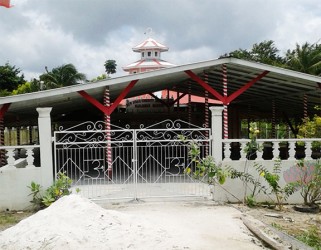
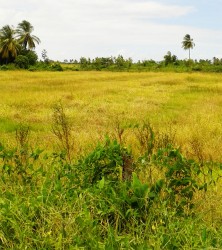
However, 85-year-old Deootie Harricharan who was sitting under her house with her daughters-in-law, was very pleasant and ready to share her life experiences.
“I didn’t live here all my life,” she said. “I born and grow up in Hague on the West Coast Demerara but when I was 17, I got married and came here to live. The place was very bushy and the land was low. This house was on a lil high spot and around it was sheer water. It didn’t had plenty people living here and the place used to be very quiet. We didn’t have no electricity nor water. We use to use the water from a pond to drink and cook and we had to bathe with water from the trench and we had some small lamps we use to use for light.”
She related that there were no radios or television in those days so entertainment was limited.
Nor was there any form of transportation; getting around meant paying for a lift on a donkey cart or walking long distances.
“There was never no school in this village so our children had to go to Charity to go to school and if they didn’t ketch the donkey cart they had to walk. We use to had to follow them to school because it just had the road in the middle and along the roadside was sheer bushes,” she recalled.
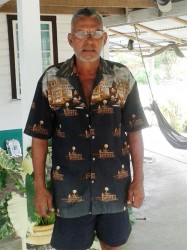
“Later on…, people come and chop the bush and start living here. Long after we get electricity and water.”
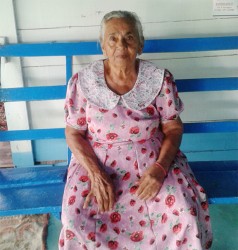
Harricharan said too that back then she had enjoyed farming.
“When I was younger, I use to plant a lot and then I use to walk to Charity to sell my greens. In those days we had cows too, so I use to sell cow milk,” she reminisced. “Eight cents and 10 cents use to be for a pint of milk. Now I get old I don’t do them things anymore. I can say that I really like living in this village. Everybody lives together as one.”
Harricharan, called Aunty Deootie is now the oldest person in the community.
Just a stone’s throw away, her son Lalbachand Harricharan was sitting in his hammock reading a daily newspaper.
“Well there isn’t really much to tell you. I born and grow up in this village too but as a little boy things were rough,” he recalled. “I can remember that we use to sleep on bags on the ground. Hardly people use to live here so the place use to be very quiet.
“On Saturdays and Sundays, I use to work to help out my family and the other days, I use to walk to school in Charity barefoot because my parents couldn’t
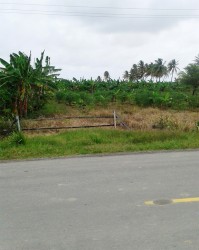
afford to buy shoes for us.
“We never had no pipe water or anything like that to use. We use to bathe in the trench and we had a big pond here. The water in that pond was for drinking and cooking. People from all over the village use to come for water from here.”
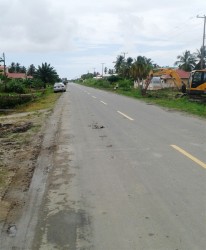
Harricharan recalled that in 1990, the rice lands in New Road were developed.
“We never had any Combine or so in those days so we use to use bulls to plough the field and mash the paddy. Little by little things start to develop and now even though there is need for improvement in the village, things are going great.”
Further along the New Road public road, Toolsieram Singh was at home in his shop.
“For 18 years, I living in New Road. I am from Lima but I sell out and come here to live,” he said. “When I move here, the public road was here but the lands were very low. I had to build up my land before I build my house. We already had electricity but there was no water.
“Before I develop myself, I use to sell fish and I even work with the NDC [Neighbourhood Democratic Council]. Now I am self-employed and I own my own
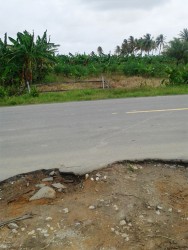
business. I’m thankful to God for everything.”
Now residents of New Road have access to potable water, electricity, telephone services and other amenities. There are three mandirs in the village which cater for the religious needs of residents. There is also a playground, but it is almost unrecognizable as such since it is covered in bushes.
Story and photos by Kenesha Fraser





